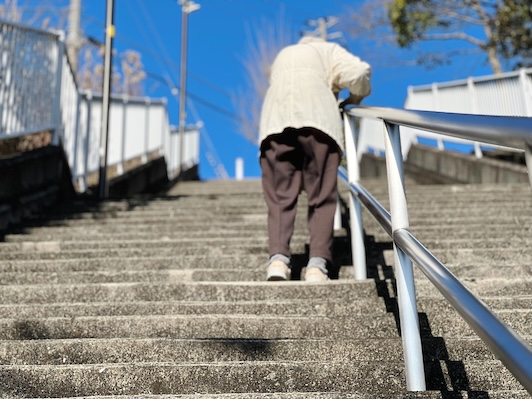n an episode of the popular Netflix show “Grace and Frankie,” Frankie (played by the formidable Lily Tomlin) is navigating a world built for speed over safety alongside her friend Margaret, who is experiencing mobility challenges. Frankie and Margaret, as pedestrians in their later years, face the daily gauntlet of impatient drivers and short crosswalk signal times.
Frankie brings the municipal authorities out to reevaluate the timing of the crossing signal to make it more suited to older people and those with mobility challenges. While her advocacy on the show is successful, changes to Canada’s built environment are slow, few and far between.
It’s time Canada built cities and towns for an aging population. A thoughtfully and intentionally designed built environment can significantly impact the well-being and independence of everyone – especially older adults.
The World Health Organization’s (WHO) age-friendly cities framework highlights the need for features like longer crosswalk signals to make aging in the community easier and more accessible. A great example is Singapore’s Green Man Plus Scheme, which prioritizes pedestrian safety.
Imagine a busy intersection. Those in need of longer crossing times can tap their regular transit card on a reader near the traffic light. That tap activates “Green Man Plus,” extending the crossing signal time. Over 1,000 crossings across Singapore are equipped with Green Man Plus, offering peace of mind for countless residents.
The good news is that Canada is moving toward the global trend of finding ways for older people to stay at home longer. The National Seniors Council of Canada recently released a report on supporting Canadians to age at home, recommending expanding support for age-friendly communities and investing in safe and innovative options designed to help older persons to age in their community of choice.
One opportunity for rapid advancement would be working with naturally occurring retirement communities – or NORCs for short. NORCs are geographic areas with a high concentration (typically 30 per cent or more) of people aged 65 and older.
In Ontario alone, an analysis done by the NORC Innovation Centre shows that there are an estimated 2,000 NORCs in high-rise buildings that are home to 200,000 older Ontarians. This is more than the number of residents in Ontario’s long-term care and retirement homes combined.
NORCs with limited access to essential services, poorly maintained sidewalks and lack of benches and public restrooms on long stretches can discourage active participation in our communities.
In a recent paper published by Women’s Age Lab at Women’s College Hospital, we saw several neighbourhood-level variables associated with a significantly increased likelihood of long-term care home wait-list status. Without convenient and safe public transportation, community centres, parks, well-lit streets and walkable areas to public squares to encourage people to gather, loneliness and isolation rates are bound to rise with age.
NORCs present a unique opportunity for governments to act now.
Studies have shown a direct link between walkable neighbourhoods and increased physical activity, a reduced risk of chronic diseases and loneliness. By prioritizing age-friendly design features both inside and outside NORCs, we can enable residents to stay connected and at home longer.
It’s time we built our communities for all ages.
The eminent Professor of Geriatric Medicine, Bernard Isaacs, said, “design for the young and you exclude the old; design for the old and you include the young.” Investing in an age-friendly built environment isn’t just the right thing to do, it’s also economically sound. A well-designed physical environment can have a positive impact on health, lead to a decrease in healthcare utilization for older adults and aid independence.
The benefits of age-friendly environments are vast, from sparking creativity to strengthening communities and reducing healthcare costs. Such environments shape societies and cultures. It’s about creating change and vibrant geographic havens with accessible destinations where all residents can thrive.
The call to action is clear, as highlighted in a recent Toronto City Council Motion: we must prioritize universal design and utilize opportunities such as NORCs to adapt and modify Canada’s built environment. It’s about fostering a healthier, happier future for all with simple solutions like the Green Man Plus Scheme.
One tap at a time.
By Stephanie Hatzifilalithis, Rachel Savage and Paula Rochon
Stephanie Hatzifilalithis is a Research Lead at Women’s Age Lab, Women’s College Hospital. Rachel Savage is a scientist at Women’s Age Lab, Women’s College Hospital.


